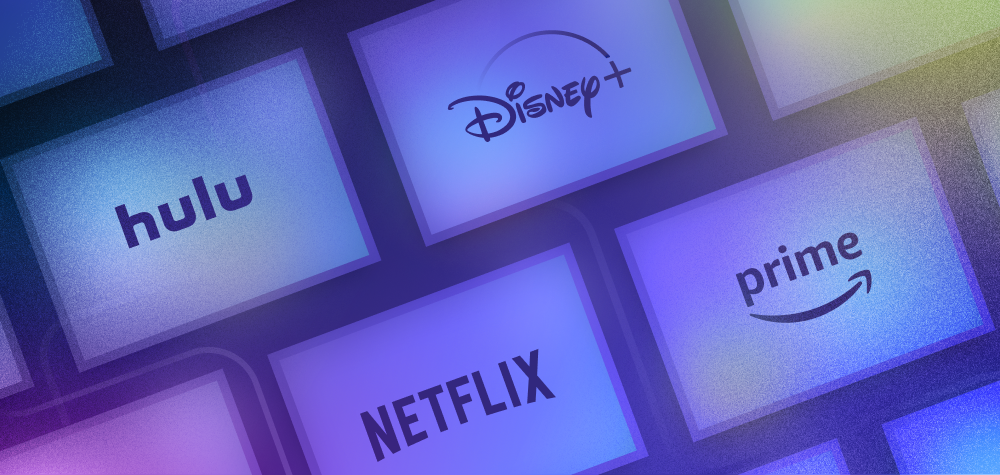Have you binged anything good lately?
The average American spends a little over 2 hours per day watching videos on connected TV (CTV) apps like Netflix, Amazon Prime, Disney+ and others. That’s roughly double the amount of time spent on CTV apps just 5 years ago.
And yet, despite its maturity (Netflix launched its streaming service 17 years ago) CTV is still relatively early in its journey as an advertising medium.
Start.io executives recently attended CTV Connect; here’s a recap of their five biggest takeaways from the conference:
#5: CTV is big and growing (duh)
Virtually everyone in America is watching CTV. It’s now estimated that 93 percent of internet-connected American households have at least one CTV app they watch on a regular basis.
Meanwhile, cable TV subscriptions have declined sharply, from a high of 105 million American households in 2010 to an estimated 53 million households by 2028, according to analysts at Digital TV Research.
Despite that growth, CTV subscribers generate a fraction of the revenue cable TV subscribers do. Cable TV viewers watch an estimated 15 minutes of ads per hour. CTV subscribers watch far fewer ads—ranging from 3 minutes to 9 minutes of ads per hour, according to eMarketer.
And despite the recent launch of ad-supported versions of most major CTV apps, ad-free subscriptions remain more popular, at least for now.
#4: People don’t hate ad-supported CTV
CTV publishers monetize by offering:
- A monthly subscription plan without ads
- A free service with ads
- A lower-cost monthly subscription with occasional ads
An estimated 80 percent of consumers subscribe to one or more ad-supported CTV services, according to a 2022 survey by LG Ads Solutions.
Given the choice, more than 60 percent of people say they’d choose an ad-supported CTV app to save money, rather paying for the more expensive, ad-free version of the same app.
That’s music to publishers’ ears, as they can generate more revenue per month from ad-supported subscribers than ad-free subscribers.
Free, ad-supported streaming TV (FAST) is growing rapidly, with free services like the Roku Channel, Amazon Freevee, Viacom’s Pluto TV, Xumo, and Tubi.
Ad-supported streaming services have room to improve their revenue mix, by running more ads per hour and/or by targeting households more effectively to increase CPMs. Consumers seem to receive changes to ads more positively than when monthly subscription rates increase.
#3: CTV subscribers are fickle
Chances are, you’ve subscribed to a streaming service, later canceled it—and maybe even returned to that same service later.
CTV streaming apps lose an average of 3 percent to 12 percent of their subscribers each month, according to analysts at Antenna.
The five biggest reasons?
- People want to saving money
- They finished watching the shows they liked
- They couldn’t find new content to watch
- The service’s promotional pricing offer ended
- The service raised its subscription price
Content discovery remains a persistent pain point for CTV subscribers. Unlike short-form videos, starting a new show on a CTV service involves a heavy commitment of time and attention.
CTV services promote a fraction of their catalog to subscribers, and streaming recommendations can start to feel stale over time.
In December 2023, Netflix revealed it had around 4,500 globally available titles on its platform at the time (with another 13,700 titles available in select regions only). Most people will only ever see a few hundred titles through Netflix’s recommendation engine.
The average person spends 6 minutes trying to figure out what to watch when they land on a CTV app, according to LG Ad Solutions. This 6-minute window could be a prime place to serve ads, several people told us at CTV Connect.
#2: CTV ads aren’t like other ads
CTV subscribers expect a lot from the CTV ads they watch. They want to see visually interesting, TV-quality ads that make good use of the real estate on their big screen TVs. TV-quality ads can cost $10,000 to produce on the low end, and many tens of thousands of dollars on the high end.
Advertisers need to aim their messaging at a household level, rather than an individual level—an estimated 88 percent of people say they watch CTV with at least one other person in the room with them.
That isn’t a problem for the big, national brands that spend hundreds of millions of dollars each year on linear TV ads. Big brands are comfortable with nebulous measurements of advertising success, and don’t have the same expectations for consumer targeting and performance as smaller, sales conversion-focused brands.
#1: Squishy performance metrics have smaller brands wary of CTV
In 2024, brands are increasingly demanding CTV apps give them measurable performance metrics, so they can calculate return on ad spend (ROAS).
Calculating ROAS is far easier with mobile and desktop ads—advertisers can instantly measure clicks and conversions, allowing them to optimize an ad campaign on the fly.
Performance measurement is harder on CTV. Some advertisers have tried to measure attribution by showing QR codes during their CTV ads, encouraging people to take out their smartphones to navigate to a webpage to sign up for a service, or buy something.
Other advertisers have instead relied on IP addresses for attribution. A quick primer on IP addresses: Every Wi-Fi router has a unique IP address that it shares with the devices that connect to the internet through that router. People periodically reset their Wi-Fi routers; when they do, their router will come back online with a new IP address.
CTV apps gather IP addresses where it’s permissible by local privacy laws and pass that data on to advertisers, who can use it to see if a smartphone or laptop computer with the same IP address later logged onto their website.
IP address-based attribution is increasingly under pressure—IP addresses are considered protected personal information under privacy regulations in Europe, California, and a handful of other U.S. states.
Local companies and smaller brands need to see precise targeting capabilities, audience segmentation tools, and more robust performance metrics before committing to spending money on CTV ads.



